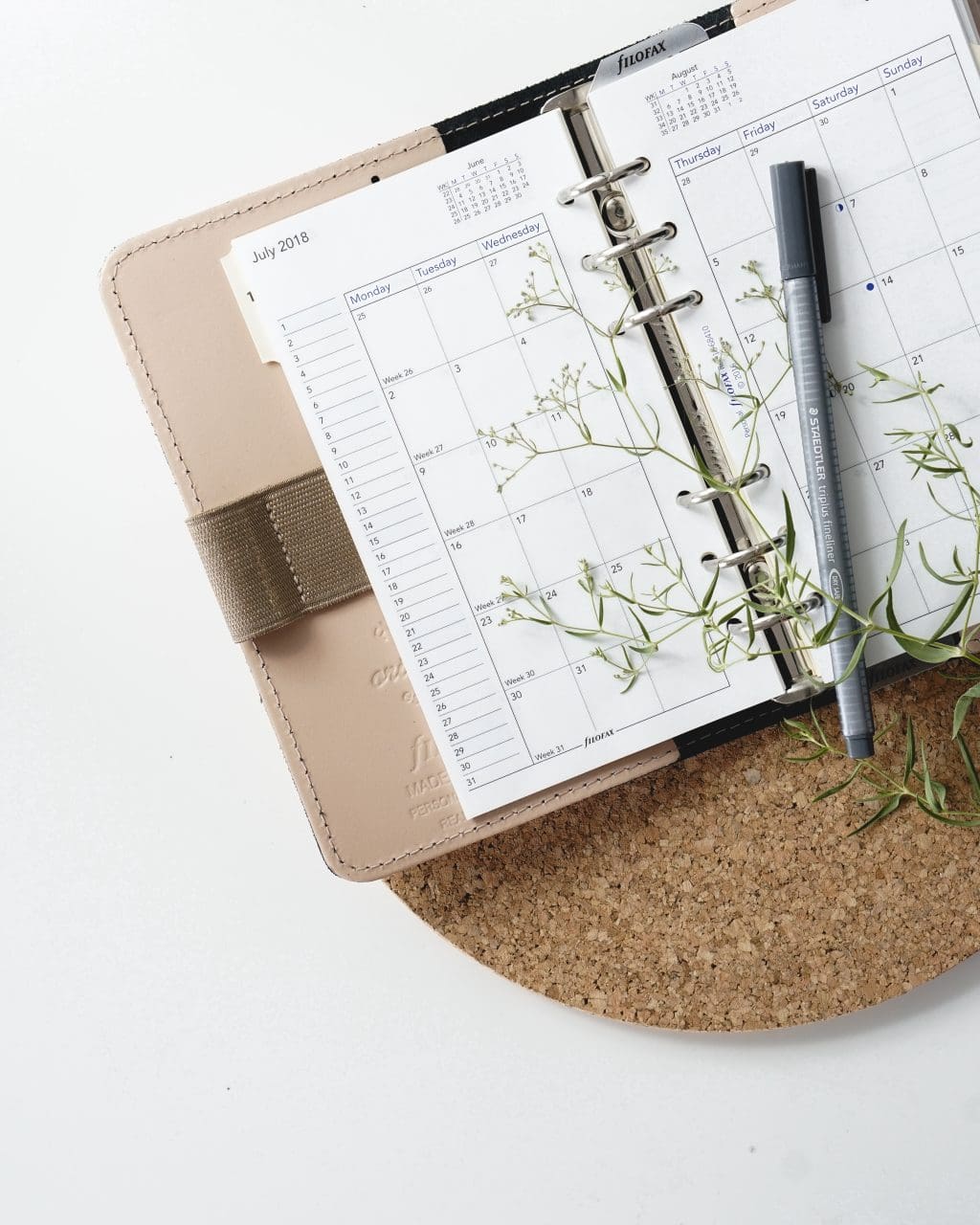
I think it’s safe to say that the holidays are complicated for most people these days. There’s a lot of love and fun to be shared, but they also tend to carry at least a little stress for everyone too. But man, that stress can be taken to an entirely new level if you have a child that’s dealing with the symptoms of ADHD, Autism, Anxiety, OCD, or really any other social/emotional/behavioral issue.
There are so many emotions that can come up when we talk about this kind of thing. First, there’s your own personal stress. Trying to juggle the chaos that can be the holiday season while trying to keep your child from getting overstimulated or dysregulated is a LOT for any mom to take on. It’s hard enough to do that during regular life, let alone the holidays.
But then some guilt starts to creep in sometimes. (It shouldn’t) but it does. You might feel selfish for worrying about your own emotional state as you realize how difficult this time of year, which is supposed to be fun and magical, is for your child. You watch them get overstimulated, act out, or pull away and retreat when things get too crazy.
You wish they could enjoy the season the way you see other kids having fun and feeling the Christmas magic.
You have to deal with your own overstimulation, your worry for your child, your potential feelings of guilt, and the chaos of the holiday season. It’s a lot, and you’re not alone in feeling a bit overwhelmed.
Maybe this isn’t resonating with you. I hope that’s the case. But if you’re feeling heightened stress and worry at the mere thought of the holidays with your kiddo, let’s talk about a few different ways you can make things easier for your kiddo and yourself this year.

1) Movement
Gosh, I can’t emphasize enough how important this will be for your child. I could write an entire article on movement and the different types that will help your kiddo stay regulated. I’ll try to keep it short here, but you are always welcome to send us an email or even give us a call/text if you want to chat about this some more.
Here are a few different types of movement to consider for your child with a (brief!) explanation about why they’re important for your kiddo and how it will help regulate them:
Gross Motor Movement
Dancing, jumping, flopping, flailing, marching, sprinting, aerobics, yoga, I don’t really care how you do it, but make it fun!
When you have your child engage in big movements, you literally send stimulation and energy to the parts of their brain that are responsible for regulation. You can improve the regulatory (think social, emotional regulation and behavioral regulation) parts of their brain by making them move their bodies – but make sure they’re big movements! Stay away from things like legos, video games, writing, or other fine motor tasks.

Spinning/Swinging/Upside-downing (I made that one up)
The technical term we’re going for here is vestibular input. Our vestibular system is how we relate to gravity and movement. Essentially our equilibrium, but it’s a bit more complex than that.
Anyway, I’ve been working with families of neurodivergent kids for many years now and I can tell you that 95% of the kids I’ve seen have an immature vestibular system. I have a longer post on our Instagram about it that you can check out here.
This means that they aren’t sensing gravity and movement the right way, which is incredibly uncomfortable for them. Some (few) are over-sensitive to vestibular input which will lead to things like excessive fear of heights, motion sickness, and fear of doing things that feel too fast, like riding a bike or a 4-wheeler.
But most of the kiddos I see are actually under-sensitive to movement and gravity which will lead to them seeking it out. If your child loves to climb up things, jump off things, sit upside down, spin, or swing, that’s because their brain is craving more vestibular input.
Again, this under-sensitivity is so, so uncomfortable for them. It can lead to emotional dysregulation, lack of clarity, a need to fidget constantly, impulsivity, and irritability.
An easy way to support them, especially through the holiday season, is by making sure they’re getting TONS of vestibular input.
- Spin them in circles in a chair
- If they’re small enough, hold them upside-down and swing them back and forth
- Have them play a game where they have to roll around on the floor
- Have them see how many somersaults they can do
- Give them 20 minutes to swing or jump if you notice them starting to get dysregulated
- Or before you know you’ll be getting into a busy environment!
- Set a goal for them to be able to do a handstand by Christmas

Use your imagination! That’s not a comprehensive list. Consider how you might be able to encourage your child to spin, swing, or get their bodies upside down as much as possible. You can do this any time – you’re not overdoing it unless they express discomfort or dizziness. So give this a try before busy events, if you sense they’re becoming dysregulated, or even if they’re already really struggling with regulation or are getting overstimulated!
Seriously, this can help re-regulate them in a matter of minutes or keep dysregulation from occurring in the first place. You’ll be shocked at how powerful it can be!
Get-The-Energy-Out Movement
You know what I’m talking about. Sometimes they just need to run around and get it out. If you’re noticing fidgeting, dysregulation, whining, withdrawal, or hyperactivity, give them some space to get it out. They’re often going to try to get that energy out in inappropriate ways: spaces that are too small or with people that don’t know how to handle it. So help them find some space or some type of movement that can help them get all that energy out!
2) Meet their sensory needs
There are so many sensory needs that the average ADHD kiddo deals with that are, unfortunately, going un-talked-about and unrecognized. Even though you may not think your child has sensory issues, I’d encourage you to not skip over this section – you’ll likely learn a thing or two about why your kiddo does some of the things they do.
Proprioception
This is our brain’s ability to connect to our body and know where we are in space. Neurodiverse people almost always have under-functioning proprioception, which means that they’re not fully connected to their bodies in space. The brain does not like the feeling of that disconnection, so it starts to look for other ways to get that sense of the body that it’s looking for.
The two ways it will do that are through movement and touch. If your child is getting really fidgety, constantly needing to move around (specifically with their feet and legs) or is constantly seeking out physical touch (hanging on you, getting too close, wanting lots of hugs/snuggles, wanting to wrestle), it’s because they’re looking, essentially, for affirmation that their body is in fact still connected to them. I know that sounds kind of extreme, but you’d be shocked at how true this is for most kiddos.

So if you see your child looking for new proprioceptive input, just go ahead and give it to them! The easiest way to do this is with deep pressure. (This works really well if they get squirmy around bedtime too.)
Squeeze them, probably a little harder than you think they should be able to tolerate, starting from their toes and working slowly all the way up through the rest of their body. Squeeze and rub their feet, their legs, their hands, their forearms, their shoulders, and finish it off with a nice, tight, full-body squeeze. I bet you’ll see them relax and regulate within just a few seconds.
Auditory Input
If your child gets overstimulated (think: rambunctious, withdrawn, hyperactive) in loud/busy environments, it’s likely due, in part, to some auditory sensitivities.
One cause of auditory sensitivity is a retained Moro Reflex. You can learn more about that in this Instagram post of ours. This is generally the problem if your child is startled/angered/sensitive to loud noises or sudden noises.
Another functional issue a lot of neurodivergent people struggle with is Auditory Processing. You know that feeling when you’re in a busy room – close quarters with everyone around you, and you’re trying to talk to someone but you keep picking up bits of the conversation next to you and you have to work a little extra hard to stay focused on the person you’re talking to?

That’s auditory processing. And if that function of your child’s brain is weak (which is, again, pretty common in ADHD, Autism, etc.), that situation I just described is what nearly every environment feels like. Even the sounds of neighbors mowing, music playing in the background, the sound of the AC, cars driving by.. All of it is a distraction. Their brain isn’t able to properly filter out what noises are unimportant vs important and they’ll get very overwhelmed pretty quickly which can come out in a variety of ways.
Whether it’s a Moro Reflex or low Auditory Processing, the easiest way to help your child feel more regulated and in-control in these situations is to give them headphones. Even if they’re just discreet headphones or something like Calmer ear buds (which are basically invisible – not an affiliate, I’ve just seen them work for a couple friends of mine!), helping to reduce the auditory stimulation will be so helpful and regulating to them! (Getting them out of that busy environment for a break will be really helpful too!)
So next time your kiddo starts acting out – consider their environment. What’s happening here that could be auditorily overstimulating? Can they feel their bodies properly? Are they seeking stimulation or getting overstimulated?
3) Give them lots of structure and time to prepare
If you’re reading this blog and resonating with what I’m talking about here, the likelihood of your child having an overactive LEFT hemisphere is pretty strong. We do see kiddos with left hemisphere deficiencies sometimes, but those are typically kids with true learning or language disorders.
So let’s assume your child has a strong left hemisphere and a weak right hemisphere.(Read more about that any time on this article or this Instagram post!)
The left side of their brain, the strong side, LOOOOOVES patterns, routine, control, and structure. This can actually cause quite a bit of anxiety for kiddos that often presents as emotional dysregulation or behavior issues because they get so stressed out. But the truth is, a lot of that stuff stems from anxiety due to a perceived lack of control/structure/expectation.
If transitioning into/out of those holiday parties or activities is stressful for your child (and therefore for your family,) an easy way to ease that tension is by giving them as much (like an insane amount) of structure and detail.
Let them know when you’re leaving.
Let them know if that time changes by even 5 minutes.
Let them know exactly what to expect when they get there
(there will be a lot of people, there will be Santa, we’ll wait in line, you’ll sit on his lap…).
Let them see your itinerary drawn out on a family calendar.
Remind them of what’s happening and what’s about to happen.

Think: Structure. Routine. Details. They’ll feel more in-control, less anxious, and therefore less angry, uncomfortable, resistant. And of course this exact same thing can apply to your daily routine! The more structure you give, the easier time they’ll have (which will make things so much easier on you, too!)
4) Give them a little right-hemisphere stimulation as-needed
Similar to my last point, their overactive left hemisphere can really get in the way of them enjoying this holiday season. So we can tap into their strengths like we just talked about, and we can also give a little extra energy and stimulation to their weaker hemisphere.
The right side of the brain controls all the things you see them struggling with. It helps us control our impulses, control our behavior, control our anger/frustration, and control our words. It helps us think about things in terms of the bigger picture and is very go-with-the-flow (opposed to the rigidity of the left hemisphere). It helps us pick up on nonverbal cues and control all of the anxiety-inducing need for control and intrusive/repetitive thoughts.
So I have this (kinda weird-feeling) protocol that will help you send a little more stimulation to their right brain. It’s free (all you have to do is download a free app and follow some set-up instructions), it’s quick (shouldn’t take more than 90 seconds), and it’s passive (doesn’t require anything from them other than to sit still-ish)
Basically what we’re going to do is send some direct light and sound stimulation into the two holes in their head that go right to their brain (their ears and their eyes). When we do that on the left side of their body, it sends stimulation, electricity, and energy directly into their right hemisphere.
PLEASE HEAR ME: This is not going to create long-term, lasting change. You have to get their body more involved with specific movements to get results that will stick.
But I have seen this easy protocol stop big meltdowns in their tracks, help kids fall asleep, end panic attacks, and help kiddos (and adults) feel a little more regulated.
You can’t hurt them by doing this, so do it often! Do it when they wake up, when they need to go to bed, and, especially during the holiday season – before you know they’re going to be in a busy environment or if you see them start to get a little overstimulated. The faster you can implement this when you see them heading towards dysregulation, the more likely you’ll be to get them feeling better.
Grab the protocol instructions here:
Will you remember all of this every single time your child starts to struggle? Probably not. This is not meant, in any way, to make you feel like you should be doing more.
But I want you to understand that everything your kiddo is dealing with has a reason. There’s a root cause. And if we can figure out what’s happening in their brain and in their environment that makes certain tasks so difficult, we can help them through those situations with a bit more ease so they can have a bit more fun. I know the most important thing to anyone reading this is that your child is happy. And you want them to enjoy this holiday season maybe a little more than the last.
So give these a try and please know that we are, quite seriously, here for you. You are always free to shoot us an email, give us a call, or even just send us a text. Someone on our team will answer you ASAP to help you find some answers and some strategies.
Merry Christmas!
P.S. Let us know in the comments which of these strategies you think is going to help your child the most! Is it movement? Is it minimizing auditory input? Is it right-brain stimulation?

Wonderful and helpful article!
Thank you Emiley! I hope you’ll be able to implement some of this for the holiday season <3